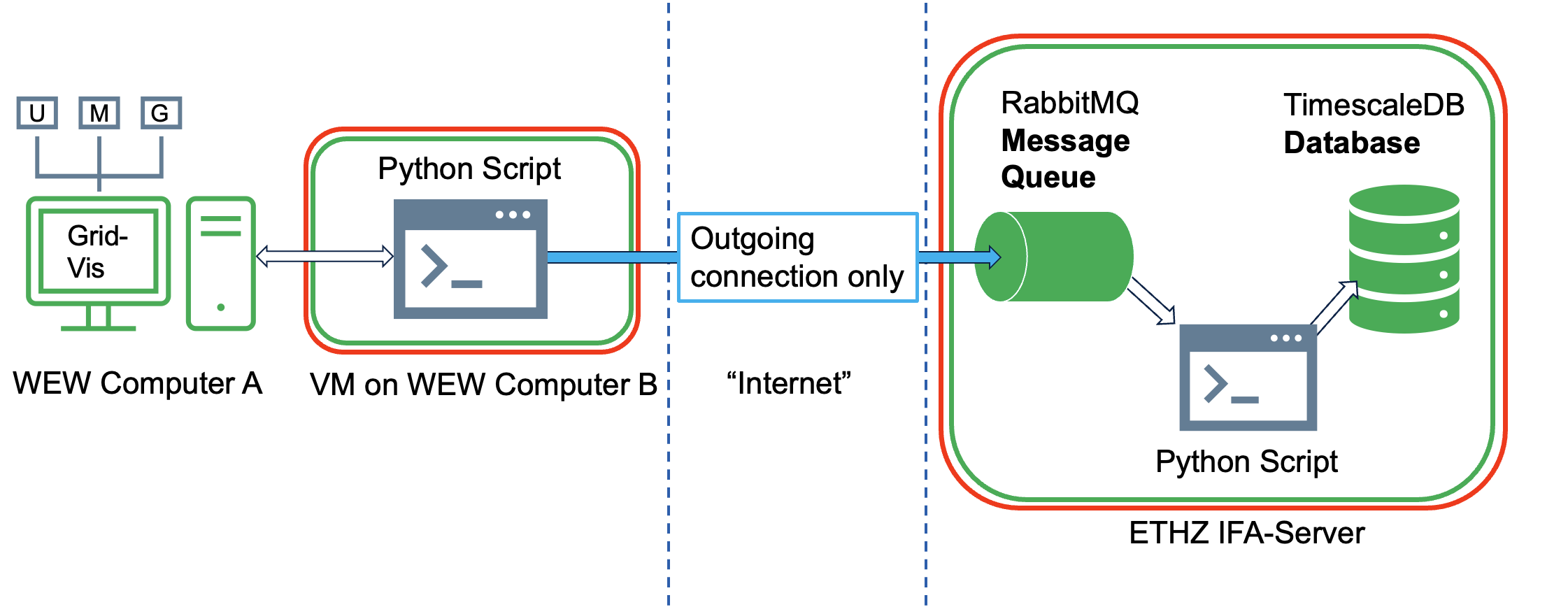
- Article
Data transfer pipeline for electric grids
Even as smart metering and measurement devices make inroads into the electric power system, researchers still largely rely on synthetic data for their studies and analyses. Real-world grid and topological data could provide valuable insights into how the grid behaves in the context of an increasing reliance on renewables and greater variability in load demand.
One of our student researchers, Yannick Schüpbach, a Master’s student at ETH Zurich, tackled this aspect in his semester thesis. His task was to create a smart, secure information technology infrastructure that would provide Grid2050 and NCCR researchers with uninterrupted access to real-world grid data from the WEW grid in Walenstadt.
The data must be transported in real time and stored for safe access over the long term. The solution also needed to be compatible with the existing infrastructure and resources, and automated for operation with minimal manual input. Crucially, as WEW grid is critical infrastructure, data security was a high priority.

Using an iterative approach, Yannick developed a data transmission structure: each component was built, refined and tested before deployment. The pipeline begins on WEW premises, where GridVis software collects various types of grid data from devices installed in the Walenstadt grid. A custom-made interface then forwards this data to a message queue running on the ETHZ node. Python scripts then retrieve the data from the queue and store it in a database, ensuring efficient, organised time-series data management. The entire system is designed with redundancy, automation and strict adherence to security standards in mind.
Yannick says: “Our architecture allows researchers and scientists working on Grid2050 to access the data collected by WEW in a simple and secure fashion, laying the foundation for Grid2050 and all future endeavours requiring this data." In future, Yannick’s architecture will be enhanced with new features and additional data sources.